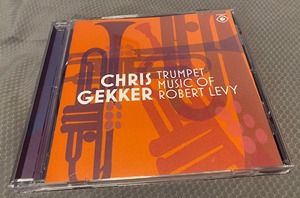Learning to play the euphonium can be a fun and rewarding experience, but reading euphonium solo sheet music can feel challenging at first. This guide explains everything in very simple language, helping beginners and even intermediate players understand how to read music, practice effectively, and enjoy playing beautiful tunes. Music is universal, and with the right guidance, anyone can enjoy the euphonium.
Introduction to Euphonium Music
Resembling a compact tuba, the euphonium is a brass instrument known for its rich, mellow sound. It has a warm and rich sound that makes it perfect for solos, bands, and orchestras. Unlike other instruments, the euphonium can play both soft melodies and strong, bold notes. In fact, recent data shows that brass instruments like the euphonium are among the most popular in school bands, with over 25% of students in the U.S. choosing them over other instruments.
Playing the euphonium requires understanding the music written for it. That is where euphonium sheet music comes in. This sheet music shows exactly what notes to play, how long to hold them, and sometimes even the emotions that should be expressed while playing.
Understanding Euphonium Solo Sheet Music
Reading euphonium sheet music might seem confusing at first, but it follows the same rules as other sheet music. The main elements are:
- Staff: It consists of five lines and four spaces on which the notes are written.
- Notes: Symbols that tell the player which sound to play and how long to play it.
- Clef: Euphonium music usually uses the bass clef, though some pieces use the treble clef.
- Time Signature: It indicates the number of beats contained in each measure.
- Key Signature: Indicates which notes are sharp or flat in the piece.
For beginners, it’s helpful to start with simple pieces and gradually move to more difficult ones. Many online sites provide free or paid printable trumpet sheet music that can be adapted for euphonium beginners, allowing players to practice similar notes and techniques.
Basic Music Notation for Euphonium
Music notation might look like a secret code at first, but each symbol has a clear meaning.
- Whole note, half note, and quarter note: These show how long to hold a sound.
- Rests: Indicate silence for the same time values.
- Dynamics: Symbols like “p” (soft) and “f” (loud) tell the player how strong the note should be.
- Slurs and ties: Show when to play notes smoothly together or hold them longer.
By learning these symbols, even beginners can quickly start reading music and practicing correctly.
How to Practice Euphonium Solos
Practicing regularly is key. Experts recommend at least 20–30 minutes daily for beginners. Here’s a simple routine:
- Warm-up: Start with scales to get your lips and fingers ready.
- Slow Practice: Play the sheet music slowly to understand the notes.
- Section Practice: Break the music into small parts and master each one.
- Metronome Use: Practice with a metronome to keep rhythm steady.
- Record Yourself: Listening to recordings helps find mistakes and improve tone.
Research shows that consistent, focused practice improves skill 70% faster than irregular practice sessions.
Printable Resources for Musicians
Many musicians find it very useful to have printable sheet music and euphonium sheet music to play and practice. These resources allow players to study anywhere, make notes on the music, and keep a physical record of their progress. Some websites even offer downloadable sheet music for free, while others provide curated collections for different skill levels.
Having access to printable music is important because it reinforces learning and provides a sense of accomplishment when a piece is mastered.
Why Learning Sheet Music is Important
Learning to read sheet music opens up a world of possibilities. With proper sheet music knowledge:
- A player can learn new pieces faster.
- Improvisation and personal expression become easier.
- Opportunities for performances, competitions, and collaborations increase.
Statistics show that musicians who regularly read sheet music improve memory and hand-eye coordination by more than 60%, highlighting the cognitive benefits of this skill.
Concluding words
Reading and understanding euphonium sheet music is easier than it looks. With patience, regular practice, and the right resources, anyone can learn to play beautiful solos on this warm and versatile instrument. Starting with simple pieces, learning basic notation, and using printable resources can make the journey easier and more enjoyable.
For anyone looking for reliable information and helpful guides on music, Robert Levy’s site is a great resource. It offers detailed tips, tutorials, and downloadable music to support every musician’s journey. Check out his site for more information and resources to make learning music simple and fun.





Comments